These islands are so good: we have to tell you about them.
For any visiting families, naturalists, wildlife enthusiasts, photographers or birdwatchers they are a ‘must visit location’ in Chile; located north of La Serena in region III and officially called Reserva Nacional Pinguino de Humboldt.
The reserve consists of three islands. Two of the islands, Isla Choros and Isla Damas are accessed from the small coastal village of Punta Choros. The road to Punta Chorus from the south, Ruta 5, is a poor 60 km, dirt road, but any vehicle can easily drive the road.
In Punta Choros there are plenty of cabins to hire as well as campsites, restaurants galore and fabulous beaches nearby. Boat trips to the islands maintain the local economy, without which the village would be poor and dependent on sea weed gathering and small scale fishing.
The trips take two and a half hours and most trips spend 1 hour on the Isla Damas.
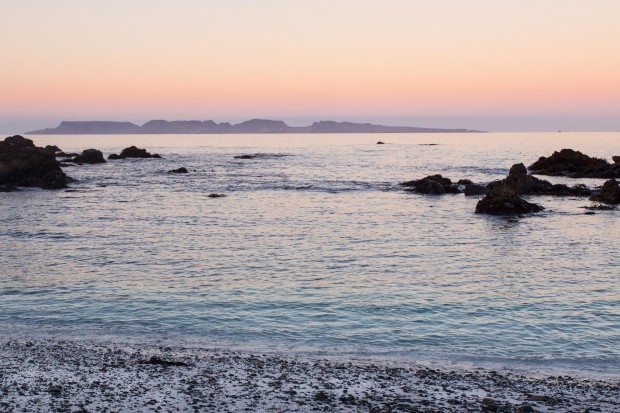
Isla Choros
The boats are very well organised and safe. The trips cost 10,000 pesos (£10) per person + 2,500pesos (£2.50) to the parks authority.
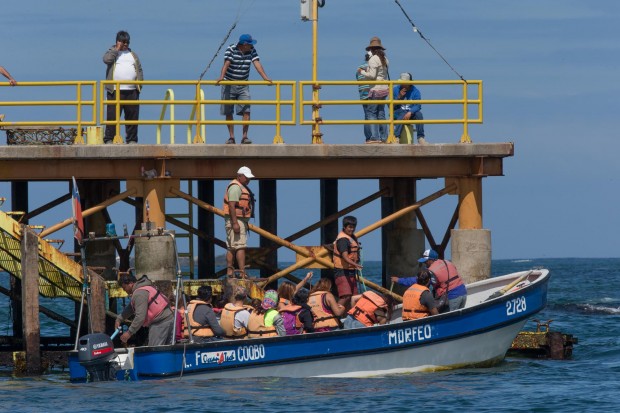
Un barco sale del muelle en Punta Choros
The Punta Choros boats look for a school of Bottlenosed Dolphins which are resident in the seas around Isla Choros and Isla Damas.
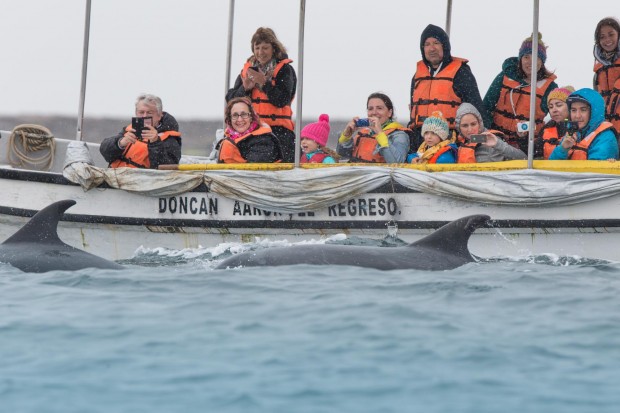
Una familia mira delfines narizes de botella
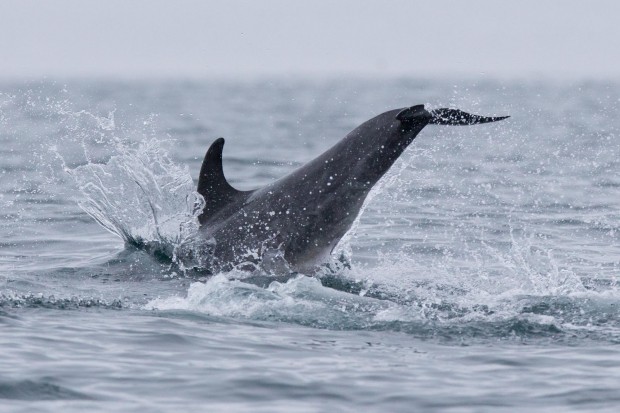
Delfin nariz de botella
These trips also manage to get you close to large numbers of birds, such as Guanay Cormorants, of which there are tens of thousands.
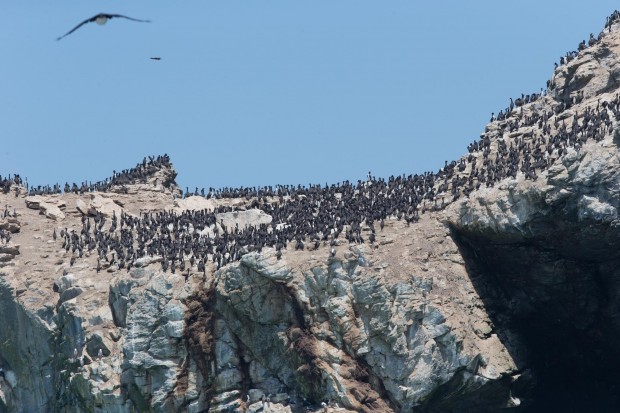
Una colonia de Guanays
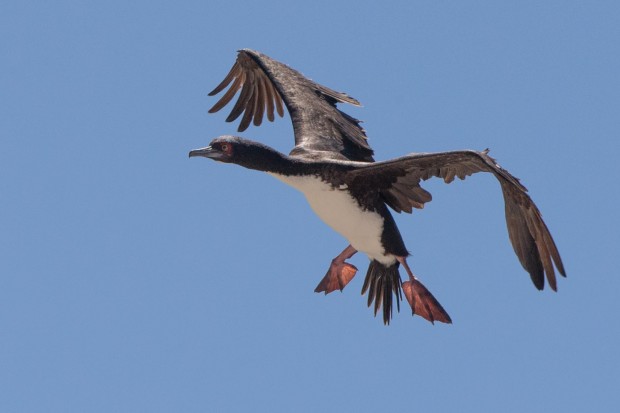
Guanay
Red-legged Cormorants, one of South America’s most beautiful sea birds.
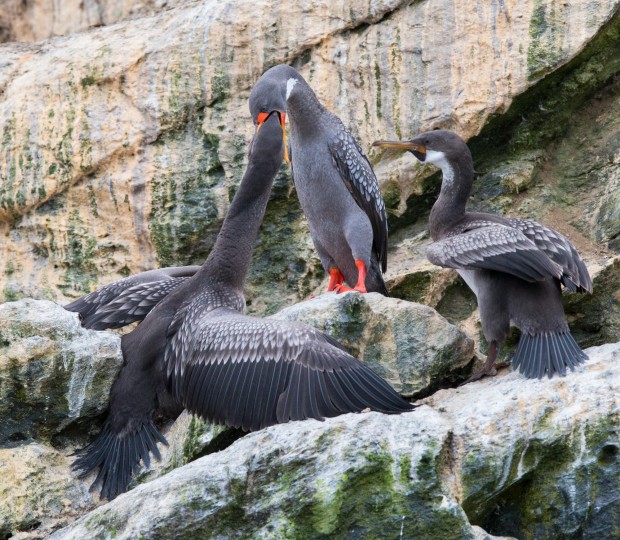
Cena para Lile polluelos
Peruvian Boobies –
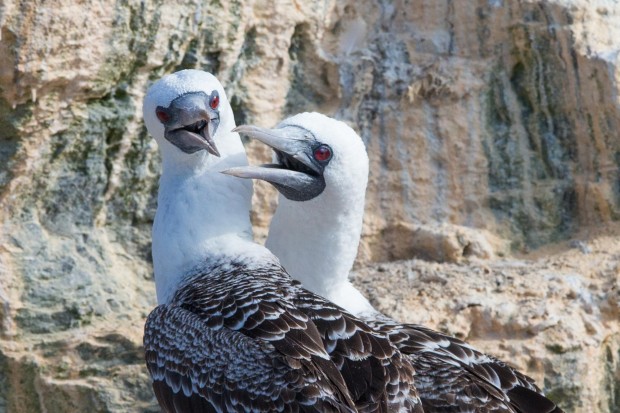
- Dos Piqueros
and of course, what everyone wants to see, Humboldt Penguins. The Isla Choros holds 70% of the world’s population of these captivating birds.
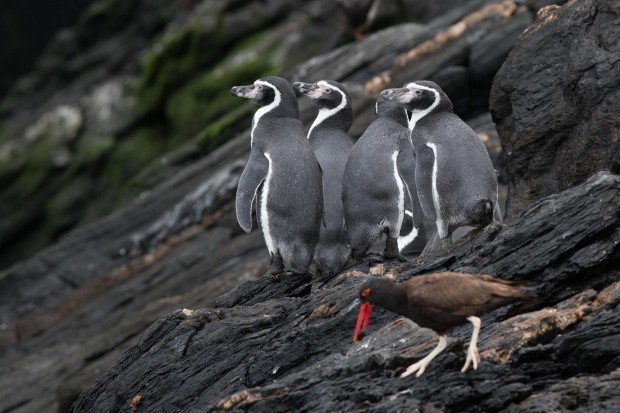
Pinguino de Humboldt
Most boats then go to Isla Damas and allow visitors to stay for an hour.
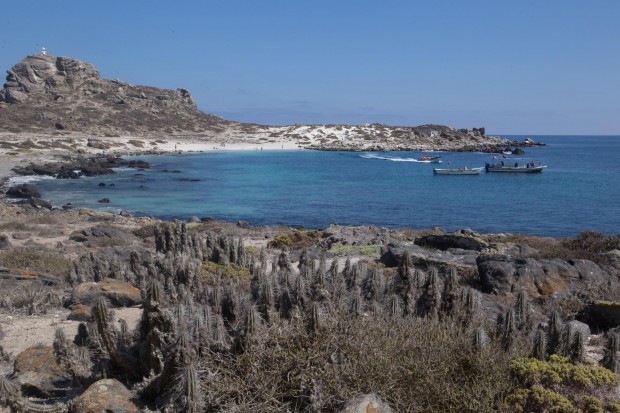
Isla Damas
Sometimes there is no rain for years in this area, it is a desert, but a very special desert, a coastal desert where moisture only comes from the unique morning fog blown ashore from the Humboldt current – the Camanchaca.
Were it not for this ethereal and bountiful phenomenon there would be no plantlife whatsoever, as it is these islands and the neighbouring mainland are a wonderland of cacti.
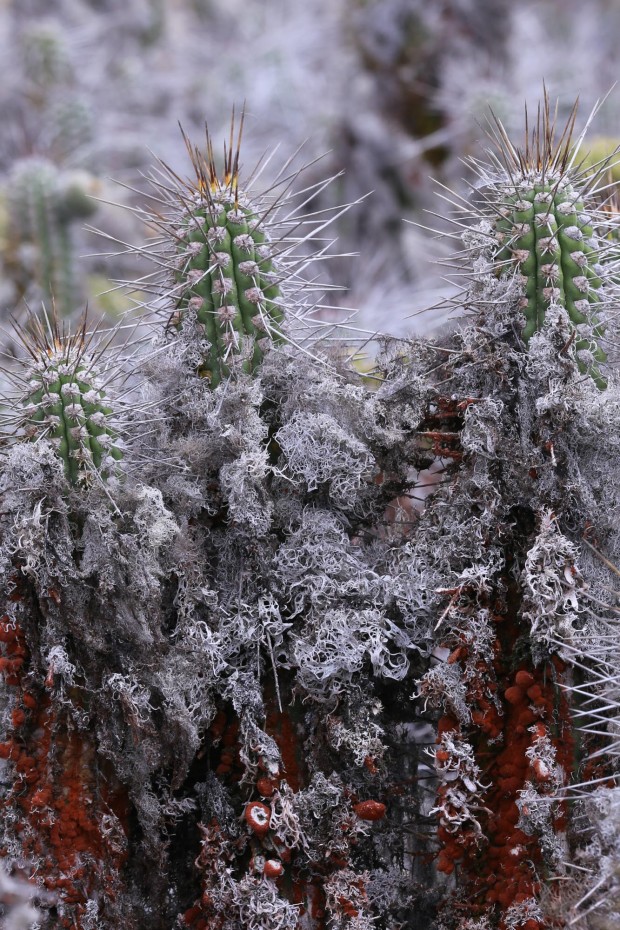
El cactus esta cubierto de liquen
To facilitate the retention of moisture the cacti are covered with lichen, a symbiotic relationship. The grey lichen drapes around the cacti. From a distance this gives the island a ghostly appearance as if some deadly disease had invaded the plants, the truth being that this is nature’s way to enable the cacti to survive.
To reach the island of Chanaral a short drive round the coast to the village of Chanaral de Acietuno is required. The village is small and less popular but the boat trips are very special and just as good as from Punta Choros.
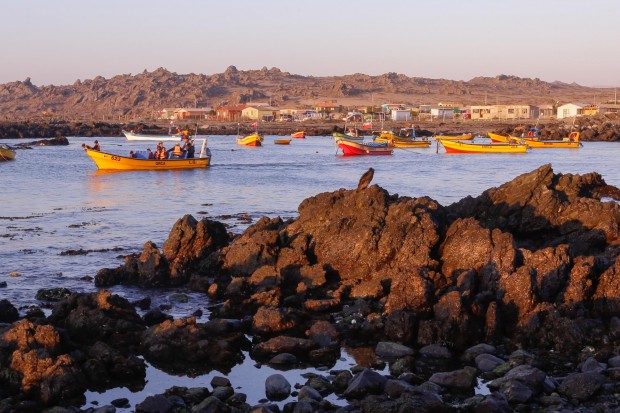
Un barco sale el Puerto de Chanaral de Acietuno
There is no landing on an island but the wildlife is spectacular especially for marine mammals. Three species of Whale are regularly seen, Fin, Humpback and the mighty Blue.
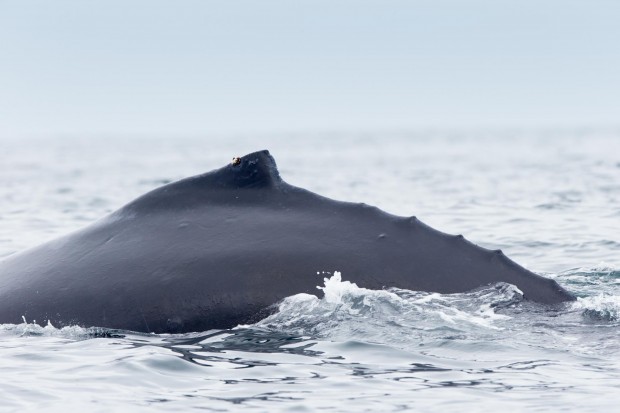
Ballena jorobada
Colonies of Sea lion breed around the rocky coast
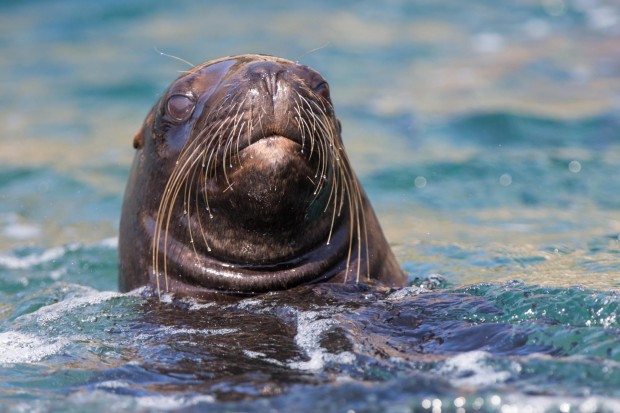
Lobo marino de un pelo
Even the less common Fur seal can be found, (look at that pointed snout) –
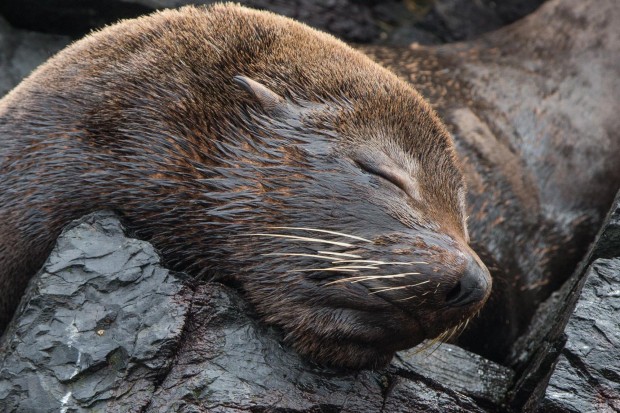
Lobo fino de dos pelos
and of course there are plenty of Humboldt Penguins
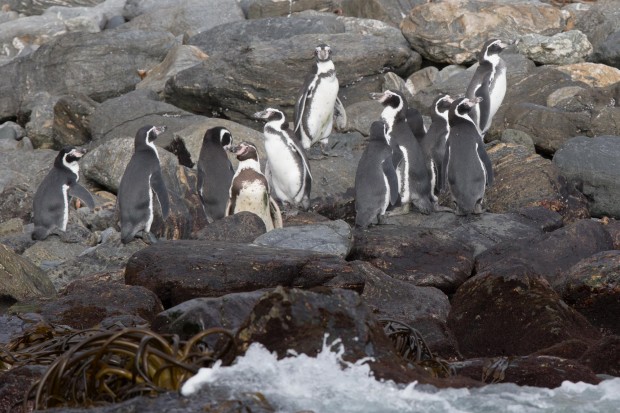
Pinguino de Humboldt
as well as their chief predator, the Sea Otter.
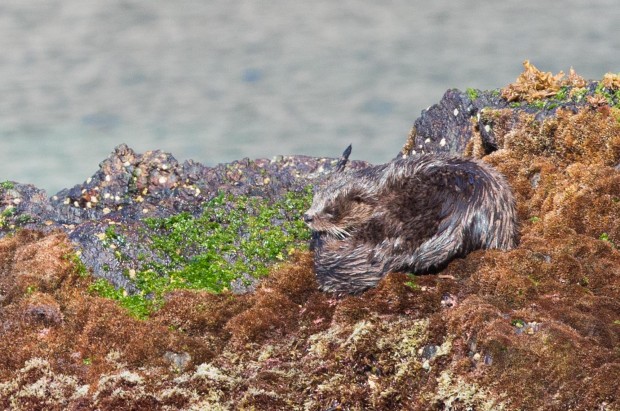
Nutria de mar, Chungungo.
Sea Otters will take young Penguins and so the adults are forced to nest above the tops of the cliffs on the top of the island out of reach of the otters. It is a large island so that is no problem for the Penguins except that to reach the sea they have to walk all the way down the cliffs, a good job they have better legs than wings!

















